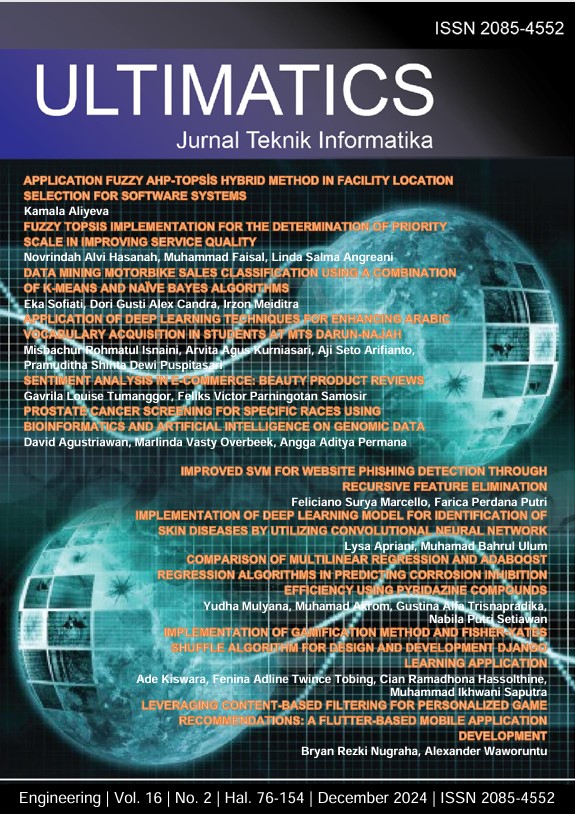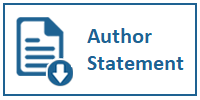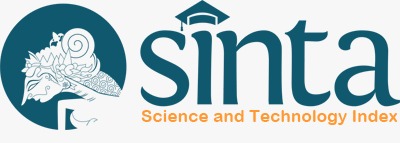Implementation of Deep Learning Model for Identification of Skin Diseases by Utilizing Convolutional Neural Network
DOI:
https://doi.org/10.31937/ti.v16i2.3753Abstract
Skin diseases are health problems that affect many individuals worldwide. Rapid and accurate diagnosis of skin diseases is essential for effective treatment. In an effort to improve diagnosis, information technology and artificial intelligence have taken on increasingly significant roles. This study focuses on the implementation of deep learning models for skin disease identification using CNN architectures EfficientNetB0, Xception and VGG16. The models were trained and tested on a dataset of 1800 images with 5 dermatitis classes and 1 normal class. Confusion matrices were used to assess the performance of the three deep learning models on the components of accuracy, recall, precision, and F1-score. The results of the deep learning model that can classify dermatitis skin diseases with a performance of more than 90% for each evaluation matrix are deep learning models utilizing EfficientNetB0 transfer learning with an accuracy of 93%. In contrast, the Xception model indicates overfitting with a training accuracy of 99.96% and a validation accuracy of 86.38%. The VGG16 model indicates underfitting with a training accuracy of 69.71% and a validation accuracy of 46.79%.
Downloads
Additional Files
Published
How to Cite
Issue
Section
License
Authors retain copyright and grant the journal right of first publication with the work simultaneously licensed under a Creative Commons Attribution-ShareAlike International License (CC-BY-SA 4.0) that allows others to share the work with an acknowledgement of the work's authorship and initial publication in this journal.
Authors are able to enter into separate, additional contractual arrangements for the non-exclusive distribution of the journal's published version of the work (e.g., post it to an institutional repository or publish it in a book), with an acknowledgement of its initial publication in this journal.
Copyright without Restrictions
The journal allows the author(s) to hold the copyright without restrictions and will retain publishing rights without restrictions.
The submitted papers are assumed to contain no proprietary material unprotected by patent or patent application; responsibility for technical content and for protection of proprietary material rests solely with the author(s) and their organizations and is not the responsibility of the ULTIMATICS or its Editorial Staff. The main (first/corresponding) author is responsible for ensuring that the article has been seen and approved by all the other authors. It is the responsibility of the author to obtain all necessary copyright release permissions for the use of any copyrighted materials in the manuscript prior to the submission.















